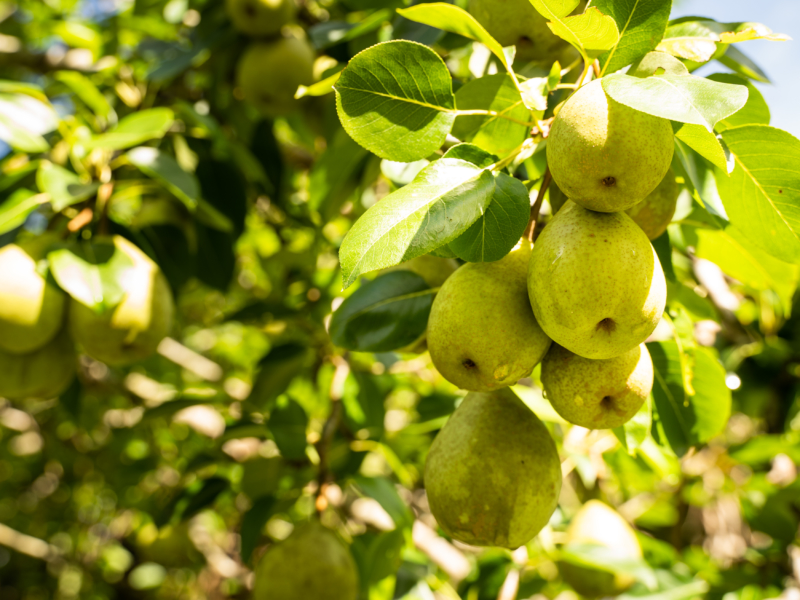If you’re growing pears in your orchard, this blog is for you because pear season is right around the corner! Pears are some of the easiest fruits to care for, and they’re relatively low maintenance. At Just Fruits and Exotics, we have a huge selection of soft and hard pear trees as we propagate eleven varieties of Oriental pears and seven types of Asian pears. Keep reading to make sure you’re pre-peared for pear season starting next month!
Pears 101
If you haven’t considered adding a pear tree to your orchard, this is your sign to do so! Pears are some of the most delicious and underrated fruits out there. Plus, they’re typically much easier to care for than other types of fruit trees. These sweet and juicy fruits are high in fiber, vitamin C, and potassium, and they’re more resistant to pests and diseases than other fruit trees. Pears are also great because they yield fruit into the Fall, allowing you to use your fruit in your holiday dishes. One thing to keep in mind when choosing a variety of pear tree is that some can grow up to 40 feet high, so you might want to look into dwarf or semi-dwarf varieties if you have a small space.
Pear Care
Since pear trees are pretty low maintenance, caring for your pear trees is relatively easy. It’s important to keep up a good watering schedule for pear trees, especially during dry periods like summer in Florida. They are more resistant to pests and disease than other fruit trees, but be on the lookout for fruit rot, leaf spot, and/or fireblight just in case. For specific solutions to these problems, visit our Orchard Guide. Branches on pear trees can get weighed down a lot by the massive amounts of pears produced. If you’re just starting with a baby pear tree, be sure to train it adequately so it can withstand the weight in the future. Remember to keep your pear trees pruned for the most successful harvest, and do not over fertilize your trees.
Harvesting Your Pears
Now for the best part: harvesting your homegrown pears! Unlike other fruits, pears shouldn’t always be left on the branches to fully ripen. You should pick your pears when the background color starts to lighten. Most pear varieties will start to turn a beautiful yellowish gold, and this is when you should pick them. Place them into a paper bag to allow them to ripen without getting mealy or rotten in the middle. They can also be stored in your fridge or freezer for use in the cooler months.
Shop Our Pear Trees!
We have so many awesome varieties of pear trees in-stock at our nursery and want to highlight some of them for you! Our Golden Boy Soft Pear Trees were discovered at an old home in Wakulla County here in Florida. This variety is super sweet, fireblight resistant, and well-worth trying. Our Sug Soft Pear Trees were actually named here at the nursery. This variety is sweet and extra juicy – even the skin is sweet! Our Biscamp Soft Pear Trees are actually pretty hard to find. This variety is even easier to care for than the rest since it’s self-fertile. Our Keiffer Hard Pear Trees are one of the oldest and most disease resistant varieties of pears, especially here in the South. These pears are perfect for homemade preserves and pear honey. Our Southern Queen Pear Trees are originally from South Mississippi, and the skin is a stunning bronze shade when ripe. This is another variety very resistant to fireblight. You can shop all of the pear trees mentioned online or in-person!Â
If you’re lucky enough to have your own pear trees full of fruit this pear season, make sure to harvest them correctly so the fruit is the tastiest it can be. Experiment and try out some new recipes with your pears! Although they are easy to take care of, make sure to do it correctly – a full pear growing guide can be found here. Happy harvesting!

